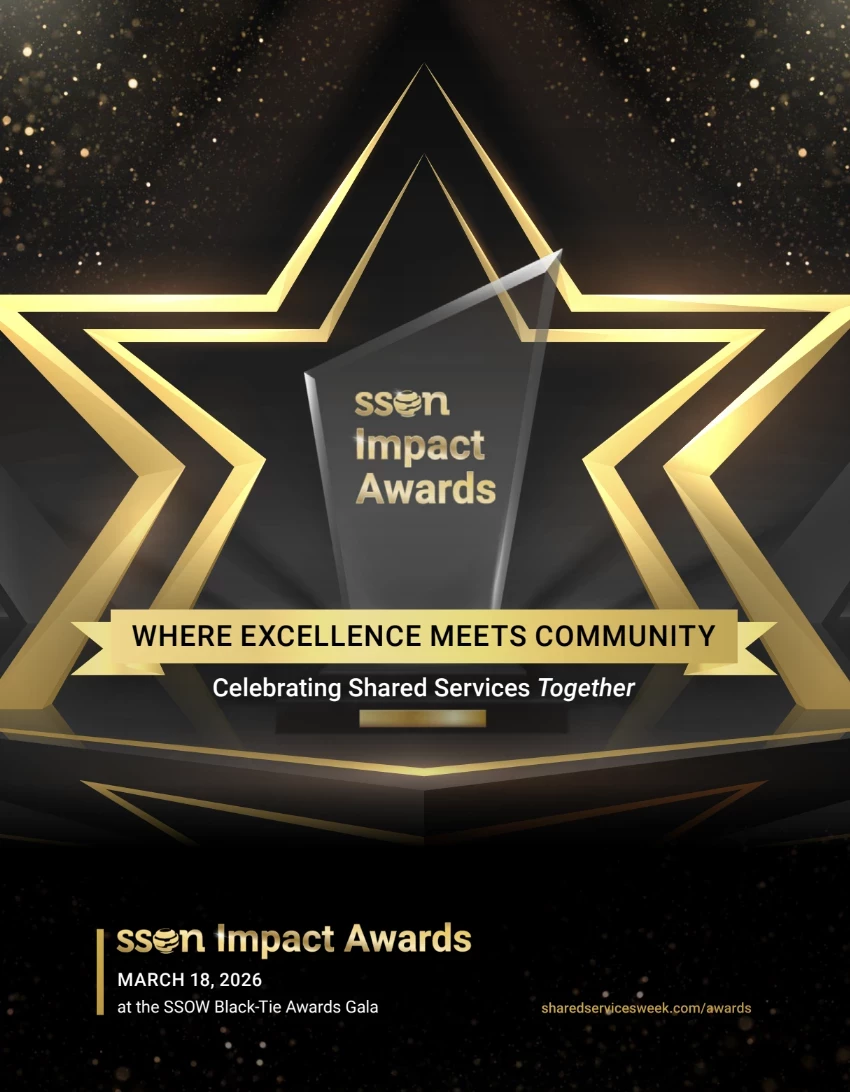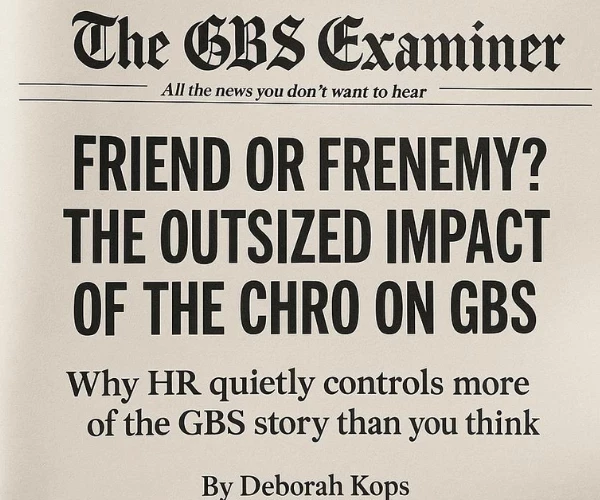GBS and the Future of Work: A Clear Vision for Takeda Business Solutions
Interview with Sanjay Patel, Senior Vice President & Head of Takeda Business Solutions
Add bookmark
Interview with Sanjay Patel, Senior Vice President & Head of Takeda Business Solutions & Member of SSON's Global Advisory Board
[Note: this interview is extracted from the report "GBS: Transformation Realized." Download the full report here]
Sanjay Patel joined Takeda, a global biopharmaceutical company, to take on the role of Senior Vice President & Head of Takeda Business Solutions (TBS), reporting to the CFO. As part of the senior leadership team, he is responsible for providing strategic leadership as well as creating an environment where the TBS organization is empowered to reimagine, rethink and recreate an enhanced and simplified end user experience for everyday processes in Finance, HR & Procurement, thereby enabling the business to focus on what really matters….. Better health for people, brighter future for the world. This mindset is being reflected in his innovative vision and operating model, as he is determined to change the course of the GBS concept by positioning the function as a true and critical business partner.
Q: What does the future of work look like for your global business services model? How has the pandemic influenced your plans?
SP: We have a very clear vision of the future of work within our shared services model, which was established 10 months ago and has not changed as a result of COVID-19. When I joined Takeda, one of the first steps we took was to define a new vision for our GBS in the context of a global bio pharmaceutical company that had recently made the 16th largest acquisition in history. I knew we needed to differentiate ourselves from what is perceived as ‘typical’ GBS because I wanted the business to view us as a true business partner that introduced innovative solutions and had the patient at the heart of everything we do. To this end we rebranded ourselves, moving away from “Global Business Services” to “Takeda Business Solutions” – or TBS. This represented an important mindset shift: Service implies a reactive, one-way and servitude mindset; Solution, on the other hand, sets an expectation that we understand the business and engage with it in solving its problems. Instead of asking: How can we help you? – in a Solutions scenario we say: Here’s how we can help you.
What COVID-19 did was reinforce the fact that we are on the right path already with our strategy. We’re making full use of our cloud software to enable seamless remote processes while collaborating virtually. We’ve used these solutions in our year-end financial close, invoice management and onboarding, among many other processes.
However, we need to speed up. To this end, focus on creating ‘digital champions’ in our organization has become a key priority. We have successfully driven this initiative through a program called TBS Automation Ninjas, which we accelerated as a result of COVID-19. A month ago, we selected a first cohort of 25 people for a 5-week immersion program on task automation. This group has already identified 50 opportunities for automation. Demand is outstripping supply at the moment, so we just launched our second cohort. Our target had been to train 10% of our TBS organization as digital Ninjas in one year. We will achieve that target six months ahead of plan, and are now expanding this program to other business functions.
Q: What is your current location footprint and how might this shift in light of the global disruption?
SP: We assessed our location strategy 10 months ago, with an eye to re-evaluating our outsource/captive strategy. Given our new Solutions-focused mindset, we knew we wanted to be closer to the business. That is a key principle that defines our location strategy. The U.S. and Japan are our two biggest markets, and we have a Solutions presence in both. We cover Europe from Poland, and our ‘Growth and Emerging Markets’ – ranging from APAC over the Middle East to LatAm – from centers in Brazil, Russia and China.
For all other locations, we have taken a different approach: We don’t have to own processes in order to deliver Solutions. In those markets where TBS does not have a direct presence, we will package our Solutions as an “in-a-box“ model for business use. The big win is that we can offer the value of our TBS model remotely, without taking direct ownership. This is important for markets like Asia or LatAm, where a move to a centralized model may not be the most optimal outcome from a ROI perspective. So we give them the “ready-to-use” solutions toolbox, while providing remote support.
TBS “in-a-box“ is an interesting concept. Old-style GBS is about command and control – otherwise, the thinking goes, how can you deliver value? COVID-19, however, has proven you don’t have to own to deliver, as long as you have the right enablers in technology, mindset and ways of working. So we are becoming more of a consulting organization, versus owning processes and doing every task. We believe in a “collaborate and influence” approach.
Q: How are you rethinking talent in the face of a Solutions mindset?
SP: We have created a new talent brand as part of our strategy and vision. The key is that it links everyone in our team to Takeda’s purpose, and that is better health for the people and a brighter future for the world.
We knew we needed to connect that purpose to what we do. So each role in TBS now has a clear line of sight over how it impacts our patients. On LinkedIn, we’ve highlighted this new talent brand as a key differentiator. Again, this strong sense of purpose is very much linked to personal values and it seems to resonate with the people we are recruiting right now. It’s always about improving patients’ lives.
Also, given our Solutions-forward approach, we needed to ensure we had four key capabilities on board. So our strategy is based on cultivating, first, relationship management/business partnering; second, the ability to drive and manage change as we move from solutioning to delivering; third, process excellence and continuous improvement; and fourth, digital champions to build RPA capabilities. By reinforcing these four capabilities, we’re providing exciting career paths and unique learning opportunities for our team, which is another important aspect of our talent strategy.
Q: What is your view on technology at this juncture?
SP: We want our people to think about solutions first. Digital and RPA offer a pathway, certainly, and we want to switch repetitive work to RPA, in line with our capability priority. We’ve deployed six bots already, which are delivering 45,000 hours of productivity a year. That basically equates to five years of nonstop work. But what it really means is extra capacity to focus on business partnering.
And it’s being noticed. In our CEO meetings and our company quarterly earnings announcement, TBS’s impact is being cited again and again. We are supporting the business in focusing on the patient. So, in line with our branding, we are truly seen as a critical partner and enabler. That is where digital technology is making the difference.
After Takeda acquired Shire Pharmaceuticals in 2019, the company doubled in size, and this has given us a great opportunity to embrace technology to get to best in class. We are now in the Top 10 of pharmaceutical companies, so one of our core metrics is to leverage digital innovation to optimize end-to-end processes. It’s not just for the sake of technology but because it delivers an exceptional end user experience for anyone touching a process we are responsible for, or who interacts with TBS on a daily basis.
Q: Where are your gaps?
SP: The challenge is around building capabilities in our people so they are ready for the future. Take data science. There simply isn’t enough resource in the world to meet the demands of global businesses. And it’s the same with automation. Both are key capabilities, though, so we need to grow talent in-house, which we are doing through our Ninja program. We are also partnering externally, but the pool is very small. This is definitely a concern for me: to ensure our capability requirements are well covered – not in 10 years, but in three.
The other challenge is to create awareness of what a GBS organization really is. We need to change our persona and perception, starting with branding. It’s not back office work. It’s not mundane. I built the last 14 years of my career in GBS and I can tell you my career has accelerated much faster in this time than it did my years outside GBS.
COVID-19 has proved that the GBS model is resilient, well prepared and can adapt very quickly to any changes imposed on it. I network with lots of GBS leaders and we all agree: When the impact of the pandemic hit us, we went into crisis mode and deployed our BCP plans; but within two weeks we were all operating business as usual. It’s in our mindset … in our DNA. We are already operating remotely and virtually.
Now, it’s just about ramping up our solutions for the enterprise.
























